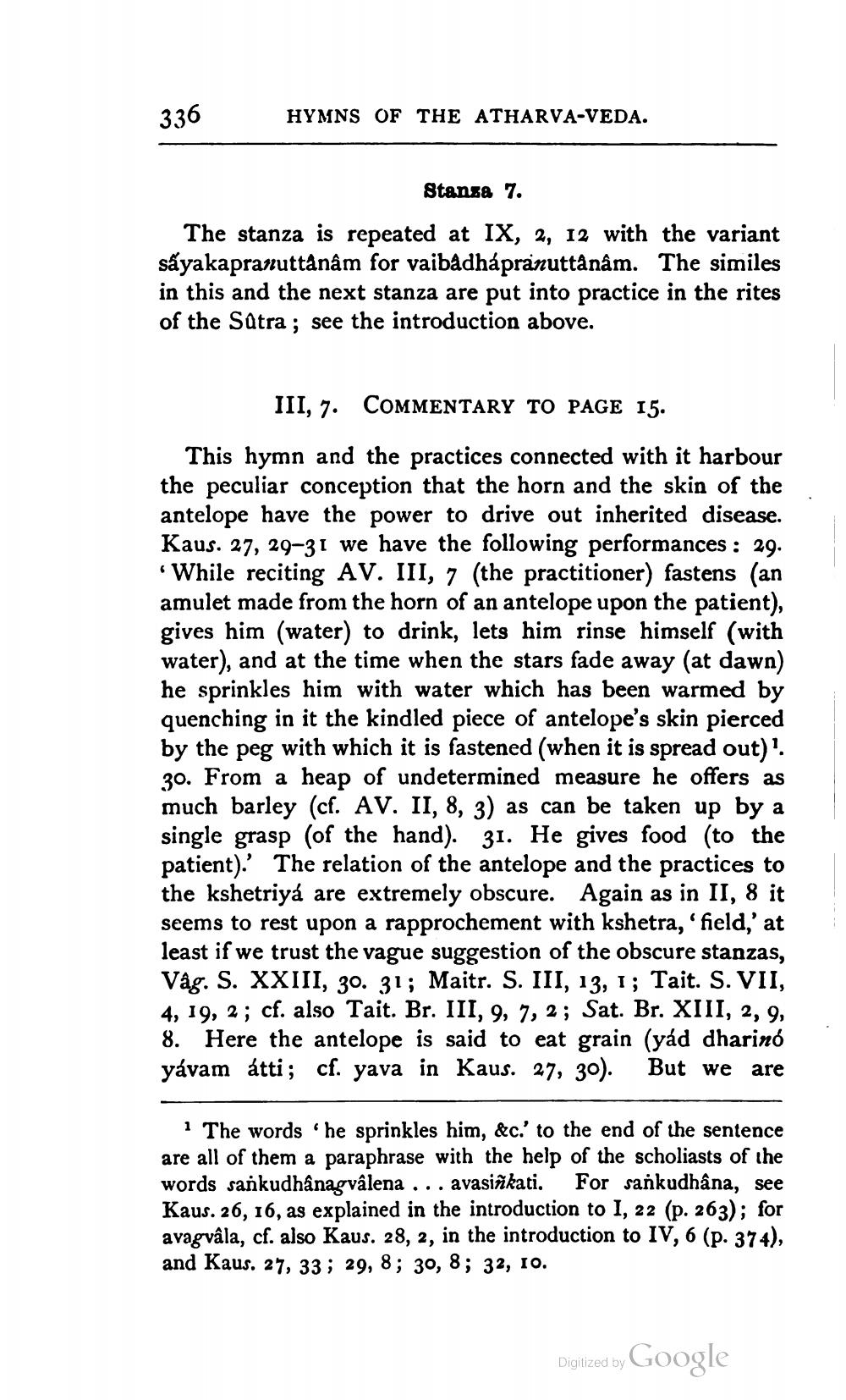________________
336
HYMNS OF THE ATHARVA-VEDA.
Stanza 7.
The stanza is repeated at IX, 2, 12 with the variant sấyakapranuttânâm for vaibâdhápranuttânâm. The similes in this and the next stanza are put into practice in the rites of the Sûtra; see the introduction above.
III, 7. COMMENTARY TO PAGE 15.
This hymn and the practices connected with it harbour the peculiar conception that the horn and the skin of the antelope have the power to drive out inherited disease. Kaus. 27, 29-31 we have the following performances : 29. 'While reciting AV. III, 7 (the practitioner) fastens (an amulet made from the horn of an antelope upon the patient), gives him (water) to drink, lets him rinse himself (with water), and at the time when the stars fade away (at dawn) he sprinkles him with water which has been warmed by quenching in it the kindled piece of antelope's skin pierced by the peg with which it is fastened (when it is spread out)1. 30. From a heap of undetermined measure he offers as much barley (cf. AV. II, 8, 3) as can be taken up by a single grasp (of the hand). 31. He gives food (to the patient).' The relation of the antelope and the practices to the kshetriyá are extremely obscure. Again as in II, 8 it seems to rest upon a rapprochement with kshetra, 'field,' at least if we trust the vague suggestion of the obscure stanzas, Våg. S. XXIII, 30. 31; Maitr. S. III, 13, 1; Tait. S. VII, 4, 19, 2; cf. also Tait. Br. III, 9, 7, 2; Sat. Br. XIII, 2, 9, 8. Here the antelope is said to eat grain (yád dharinó yávam átti; cf. yava in Kaus. 27, 30). But we are
1 The words 'he sprinkles him, &c.' to the end of the sentence are all of them a paraphrase with the help of the scholiasts of the words sankudhânagvâlena... avasinkati. For sankudhâna, see Kaus. 26, 16, as explained in the introduction to I, 22 (p. 263); for avagvâla, cf. also Kaus. 28, 2, in the introduction to IV, 6 (p. 374), and Kaus. 27, 33; 29, 8; 30, 8; 32, 10.
Digitized by Google




